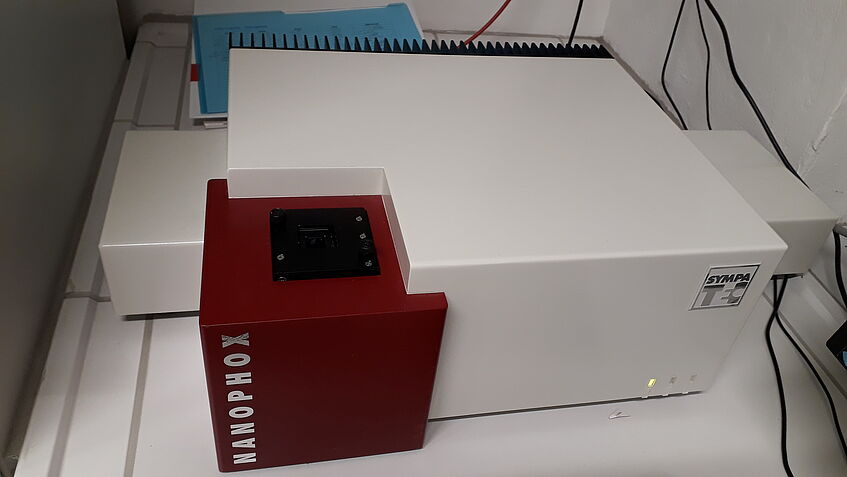Characterisation Methods
X-Ray Photoelectron spectroscopy (XPS, formerly known as ESCA)
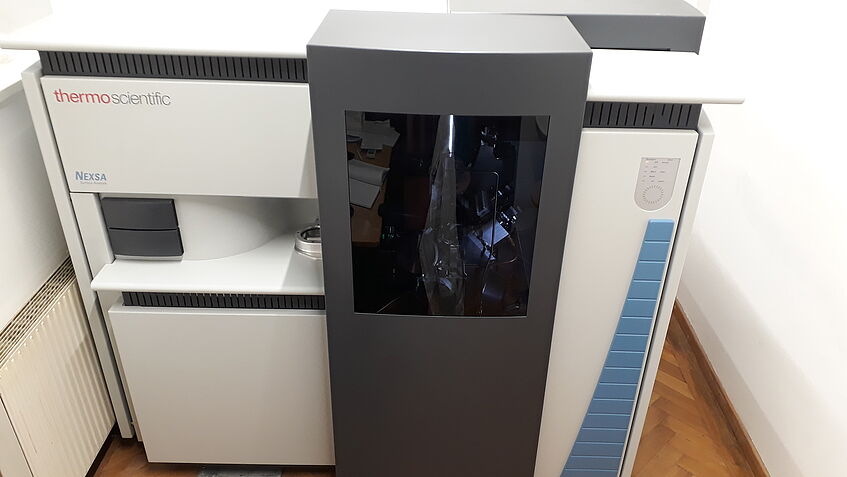
X-Ray Photoelectron spectroscopy (XPS, formerly known as ESCA)
The elemental composition of surfaces is analysed by XPS (ThermoScientific Nexsa) with Al Kα radiation. The instrument is equipped with an Ar cluster ion gun allowing for low energy (e.g. polymer) or high energy (e.g. metals) etching to clean the surface and analyzing depth profiles.
Inverse Gas Chromatograph (iGC)
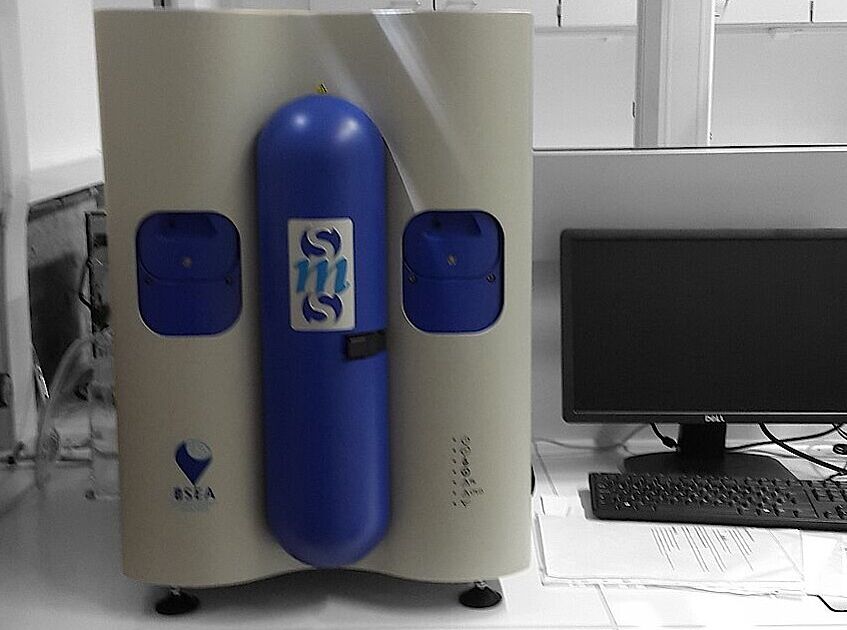
Inverse Gas Chromatograph (iGC)
iGC (SMS Surface Measurement Systems) is an advanced gas phase instrumentation for the characterisation of particulates, fibres and thin-films. Opposed to conventional GC, the sample acts as column and known amounts of various gases are injected and from the chromatograms e.g. surface energies and its components as well as specific surface areas, acid/base/polar functionality of surfaces, diffusion kinetics, solubility parameters, etc. calculated.
Moisture Uptake Behaviour

Moisture Uptake Behaviour
Dynamic vapour sorption (DVS)
DVS Intrinsic (SMS Surface Measurement Systems) allows automated, rapid and accurate gravimetric measurements of moisture uptake in solid materials (e.g., polymers, paper, natural fibres, composites and porous materials) over a wide temperature range using dynamic environment control and ultra-sensitive recording microbalance with resolution of ~0.1 μg. The ability to work with very small sample sizes combined with dynamic vapour flows reduces the time to measure moisture sorption isotherms from weeks or months to hours or days.
Foam analyser

Foam analyser
The Dynamic Foam Analyser (Krüss) is used to study foamability and foam stability of liquid foams. Furthermore, bubble size and bubble size distribution can be measured as function of time.
Dynamic Contact Angle measurement
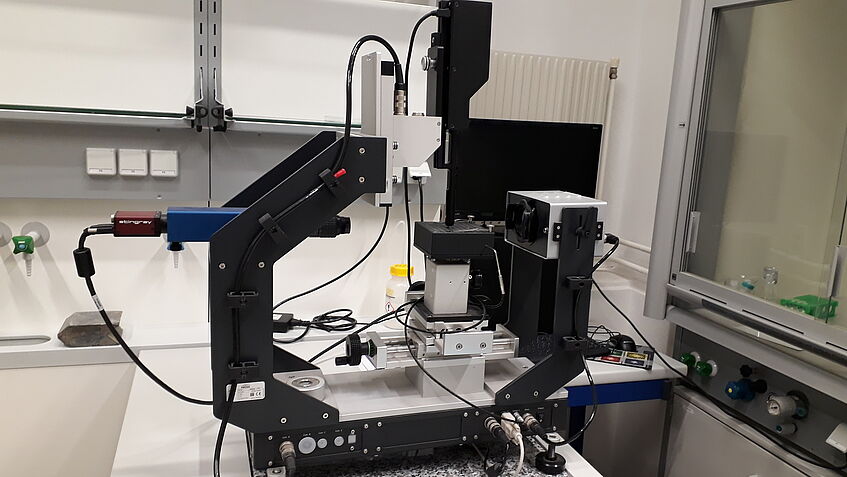
Dynamic Contact Angle measurement
The contact angle is the angle at which a liquid/vapor interface meets the solid surface, specific for any given system and is determined by the interactions across the three interfaces. Using a Drop Shape Analyzer (DSA30 K, Krüss) surfaces can be probed with a variety of test liquids to obtain advancing and receding contact angles and subsequently calculate surface energies. Hot melts and their interaction with surfaces (such as powder beds) can also be studied up to temperatures of 400°C.
Zeta Potential (streaming & electrophoresis) measurement
The zeta-potential of porous media, fibres, films, and powders can be studied using various measuring cells by the Streaming Potential method (Elekrokinetic Analyser SurPass, Anton Paar) as a function of time, pH and type and concentration of the electrolyte. The zeta-potential plateau region and the isoelectric point (point of zero charge) can be determined by pH dependent measurements to assess surface modification by (for example) plasma treatment or compound adsorption.
By Electrophoresis (Malvern Zetasizer) the surface charge, electrokinetic mobility and size of particles in suspension can be assessed based on the principle of light scattering.
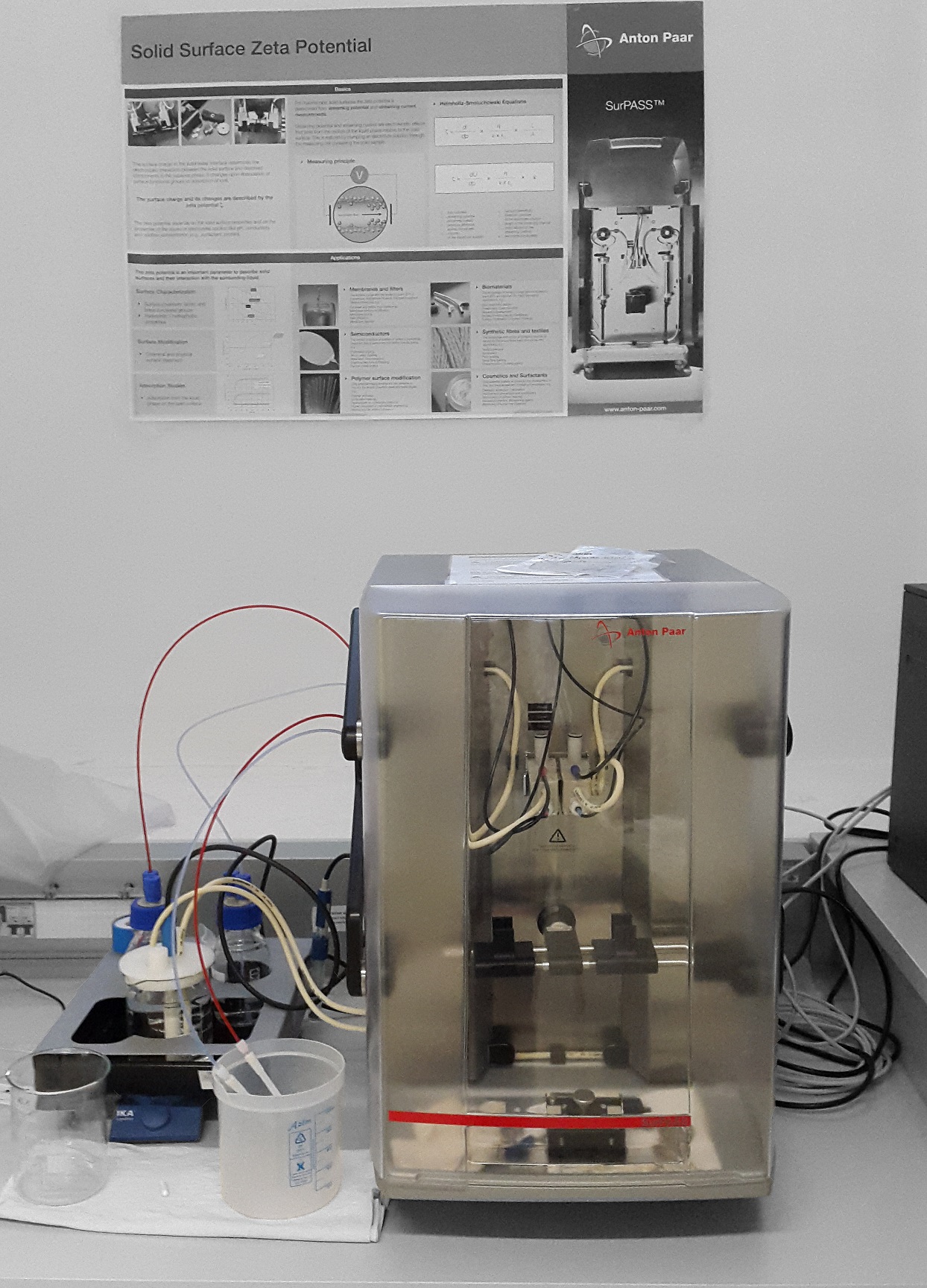

Tensiometry and single fibre wettability measurement
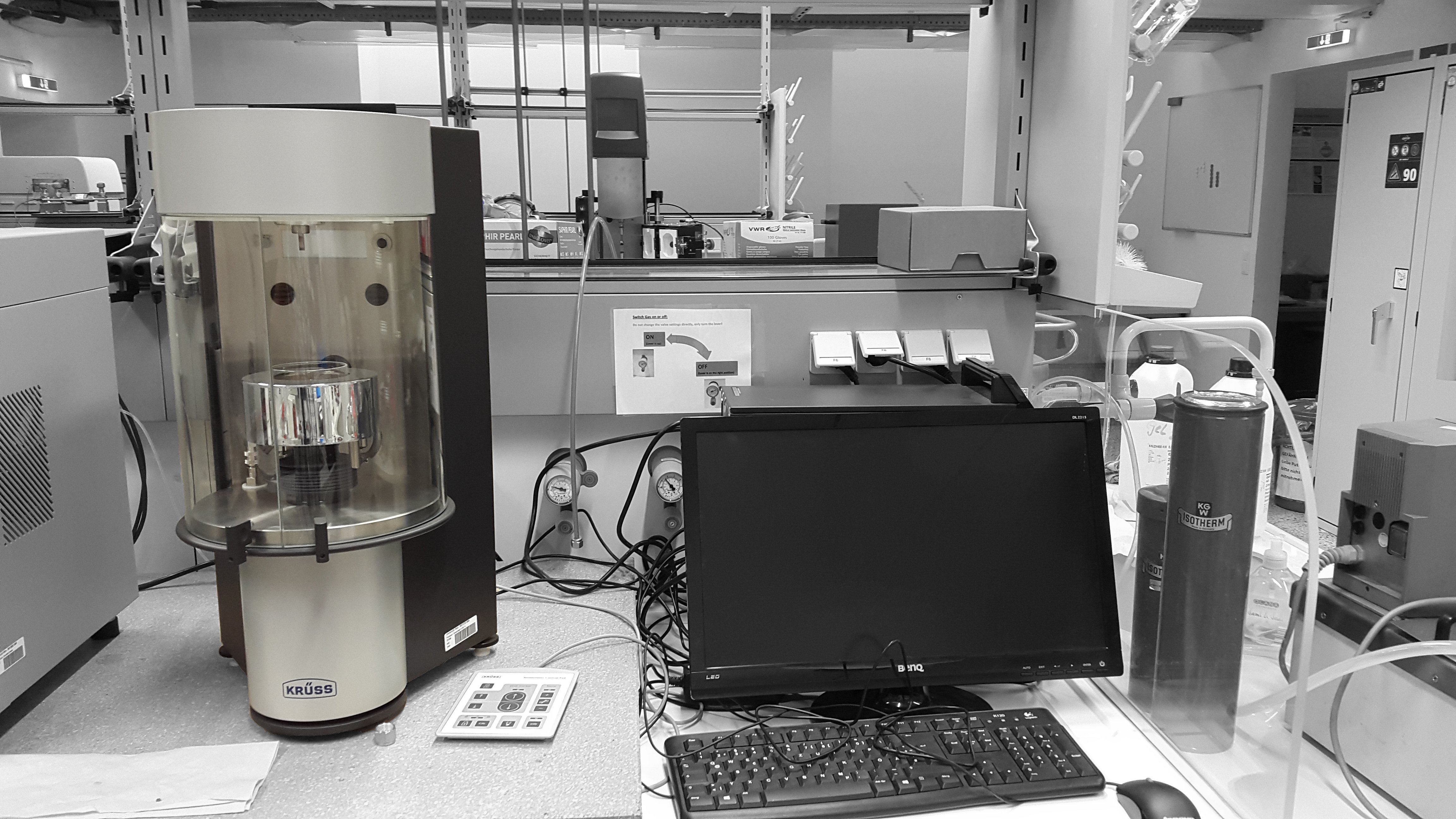
Tensiometry and single fibre wettability measurement
The dynamic fluid sorption (capillary rise) technique is used to determine the wettability of porous systems, fibres, powders and membranes using an automated Tensiometer (Krüss K100). By applying the modified Washburn equation surface energies can be calculated. Determination of surface/interfacial tensions using the Ring- or Wilhelmy-plate methods is also possible.
A modified Ultramicrobalance (4504 MP8, Sartorius, Göttingen, Germany; accuracy = 0.1 μg) is used to measure contact angles on single (carbon) fibres with diameters as low as 5 μm by applying the modified Wilhelmy-technique.
Viscoelastic and rheological properties
Rotational Rheometer
Rotational Rheometry (TA Discvoery HR2) is used for determination of viscosities of fluids with various geometries (capillary, plate-plate, cone-plate, Cup & Bob).
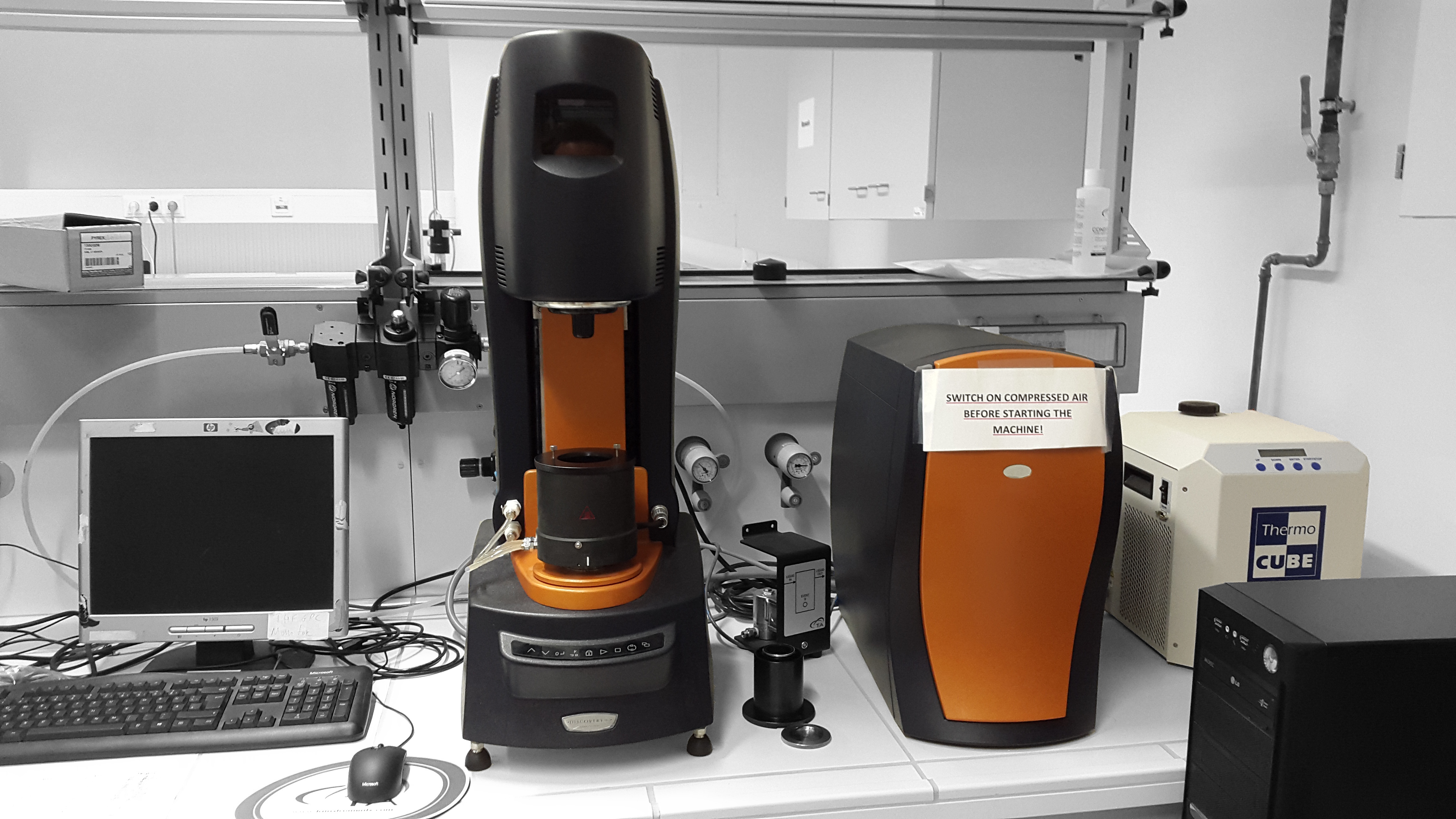
BET Surface Analysis
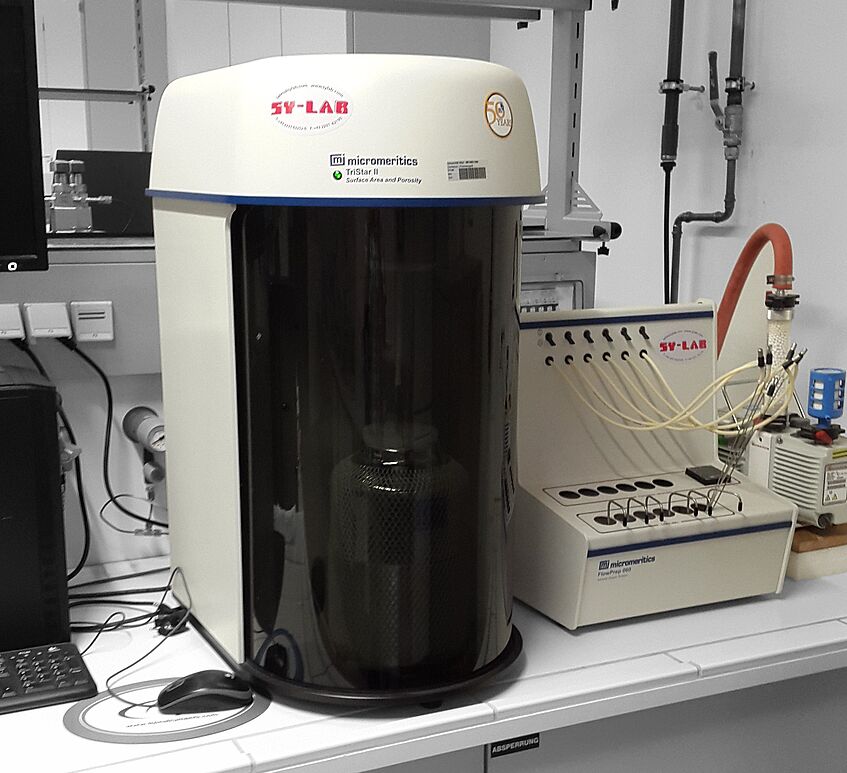
BET Surface Analysis
A Surface Area Analyser (Micromeritics TriStar II) is used to determine specific surface areas utilizing the BET isotherm method by nitrogen adsorption/desorption.
Molecular Weight
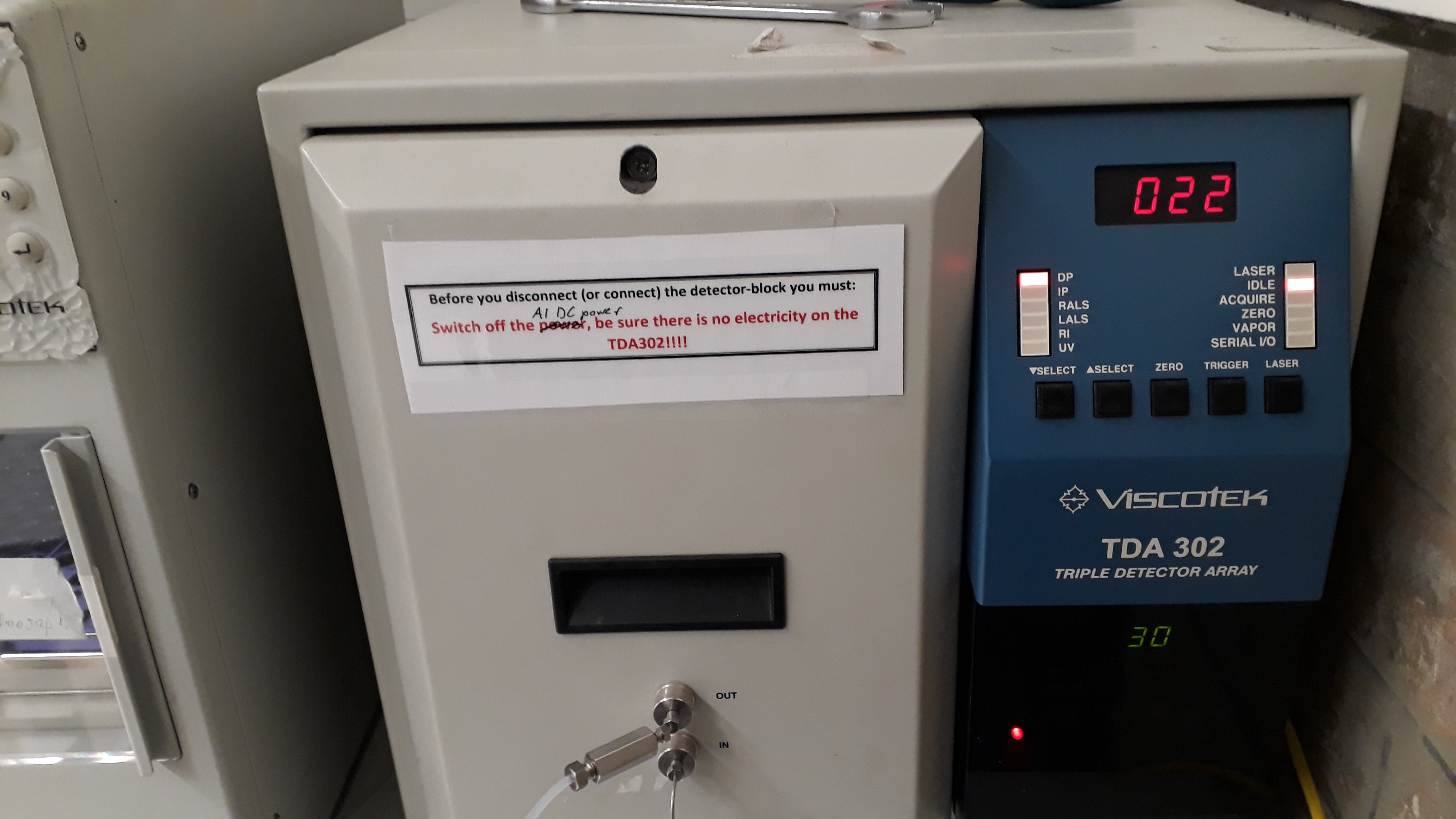
Molecular Weight
Gel permeation chromatography (GPC)
GPC equipped with triple detection system (Viscotek TDA 302) is used for the characterisation of the molecular weight (distribution) of water-soluble polymers.
Particle Size
Nano-/Microparticles
The size of nanoparticles from 0.5 nm to 10 µm is analyzed using Dynamic Light Scattering with a Nanophox (Sympatec). For larger particles (0.1 µm to 8.75 mm) Helos KR (Sympatec) is used.
